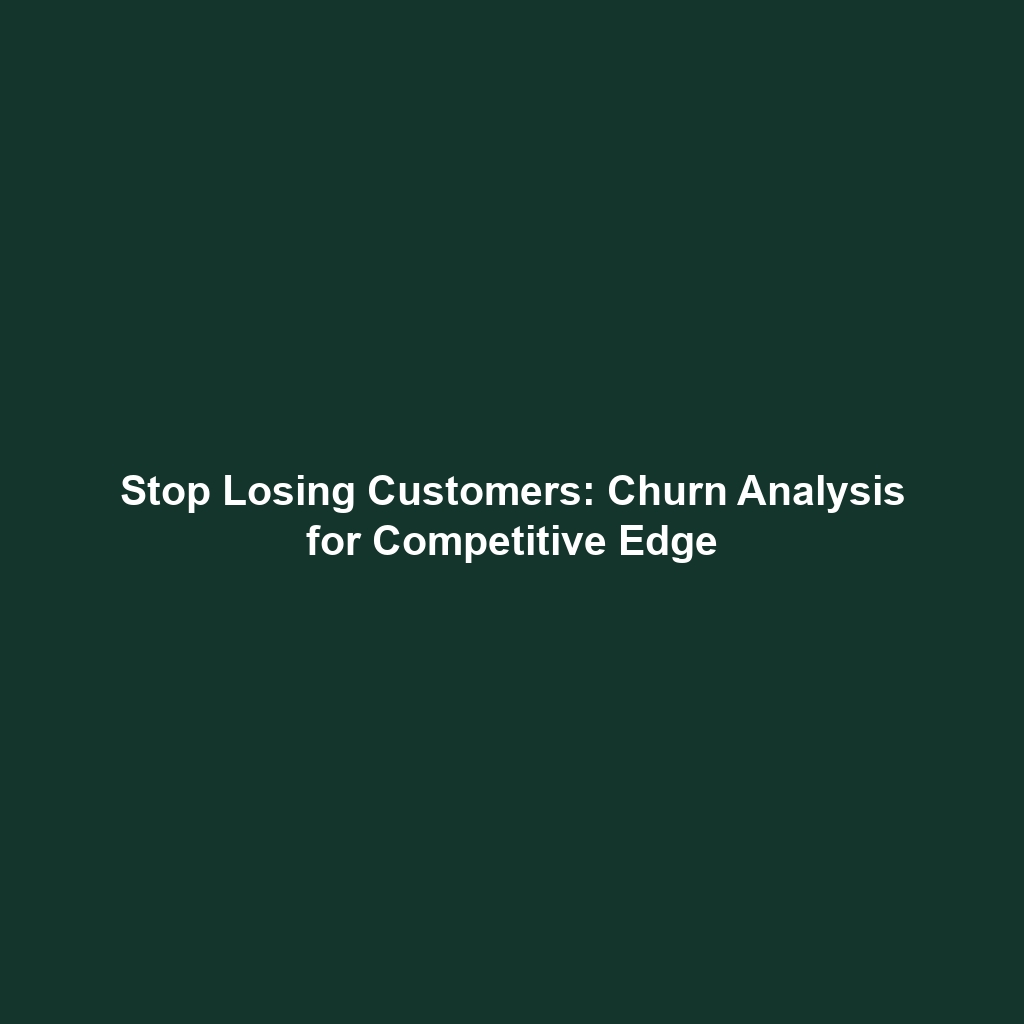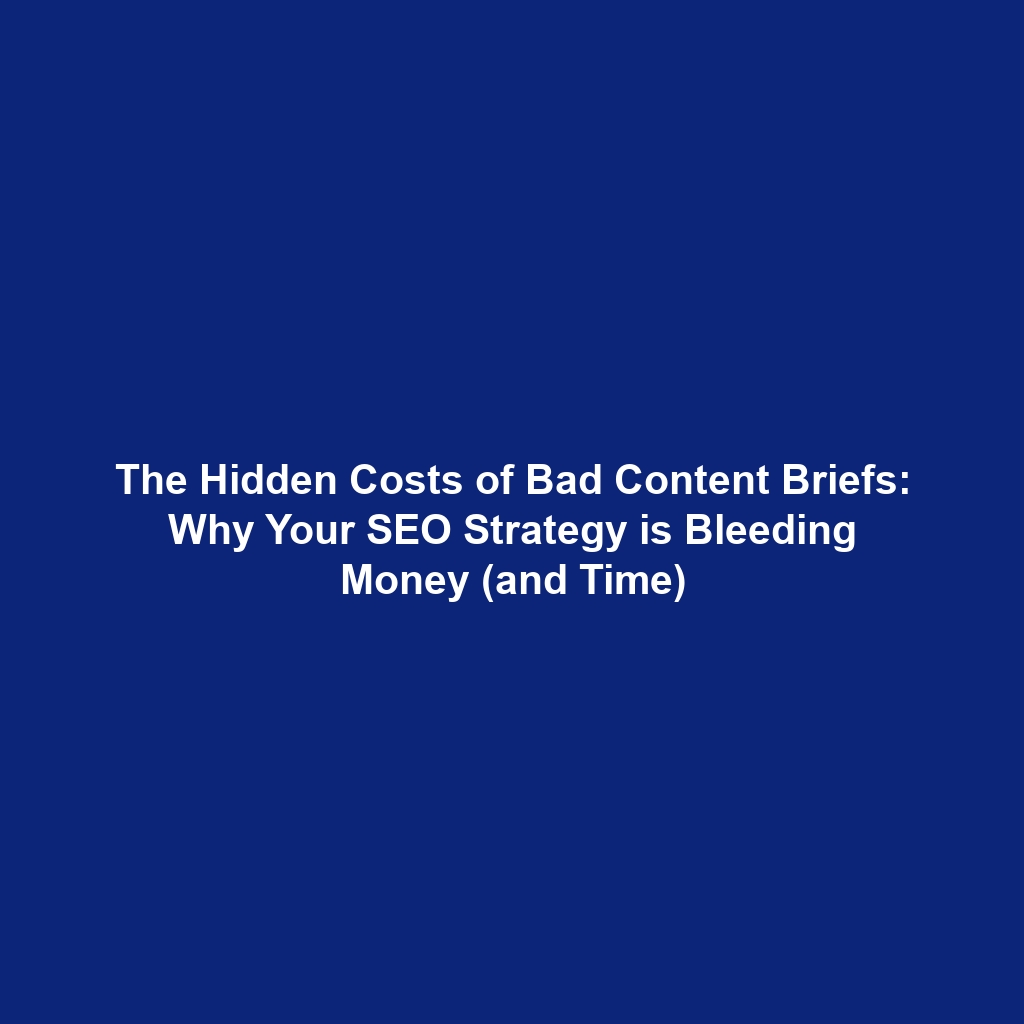Advanced Churn Analysis: Predicting and Preventing Customer Defection to Competitors Using Survival Analysis
In today’s hyper-competitive landscape, customer retention is paramount. Acquiring a new customer is significantly more expensive than retaining an existing one. That’s why advanced churn analysis is no longer a luxury; it’s a necessity for any business striving for sustainable growth and a competitive edge. This article delves into the world of advanced churn analysis, focusing on techniques like survival analysis and Cox proportional hazards models, to help you predict and prevent customer defections to competitors.
The High Cost of Customer Churn
Before diving into the technical aspects, let’s acknowledge the business reality. Customer churn represents lost revenue, diminished market share, and damaged brand reputation. Understanding the *why* behind churn is crucial, but knowing *when* a customer is likely to churn is equally vital. This allows for proactive intervention and targeted retention efforts.
Think of a SaaS company losing customers on annual subscription renewals. A simple churn rate calculation might tell them they’re losing 10% of their customers each year. However, advanced churn analysis can reveal that customers who haven’t logged in for 30 days, haven’t used feature X, and have opened fewer than two support tickets are at a significantly higher risk of churning three months before their renewal date. This level of granularity empowers the SaaS company to intervene with personalized offers, targeted training, or proactive support before it’s too late. This is where advanced analytics shines.
Key Insight: Understanding the *timing* of churn is just as important as understanding the *reasons* for churn. Survival analysis helps you uncover this crucial temporal dimension.
Why Traditional Churn Analysis Falls Short
Traditional churn analysis methods often rely on simple metrics like churn rate and rely heavily on retrospective analysis. While these metrics are helpful, they provide a limited view of the complex dynamics driving customer churn. They lack the predictive power and granularity needed for effective retention strategies.
For example, calculating the overall churn rate doesn’t tell you which customer segments are most vulnerable or when they are most likely to leave. Similarly, relying solely on customer surveys to understand churn reasons can be biased and incomplete. Customers might not accurately recall their reasons for leaving, or they might not be willing to provide honest feedback.
Survival Analysis: A Powerful Tool for Churn Prediction
Survival analysis, also known as time-to-event analysis, is a statistical method for analyzing the expected duration of time until one or more events happen, such as customer churn. Unlike traditional methods, survival analysis explicitly accounts for the time dimension, making it ideal for predicting when customers are likely to churn.
- Handles Censored Data: A key strength of survival analysis is its ability to handle “censored” data. Censoring occurs when we don’t observe the event of interest (churn) for all customers within the observation period. For example, some customers might still be active at the end of the analysis period. Survival analysis techniques properly account for these customers, providing more accurate estimates.
- Predicts Time to Churn: Survival analysis provides insights into the probability of a customer churning at any given point in time. This allows businesses to identify high-risk customers and intervene proactively.
- Identifies Risk Factors: By incorporating customer characteristics and behaviors into the analysis, survival analysis helps identify the key factors that influence churn risk.
Key Concepts in Survival Analysis
Understanding the fundamental concepts of survival analysis is essential for effectively applying these techniques to churn prediction:
- Survival Function (S(t)): The survival function represents the probability that a customer will remain active beyond a certain time t. It starts at 1 (100% survival) and decreases over time as customers churn.
- Hazard Function (h(t)): The hazard function represents the instantaneous risk of churn at time t, given that the customer has survived up to that point. A higher hazard rate indicates a greater risk of churn.
- Censoring: As mentioned earlier, censoring occurs when we don’t observe the event of interest (churn) for all customers within the observation period. There are different types of censoring, such as right censoring (the most common type), where we only know that a customer survived beyond a certain time.
Imagine a telecom company analyzing customer churn. They have data on thousands of customers, including their subscription start date, usage patterns, billing history, and demographics. Some customers have churned, while others are still active. Using survival analysis, the telecom company can estimate the survival function, which shows the probability of a customer remaining subscribed over time. They can also calculate the hazard function, which indicates the instantaneous risk of churn at any given point in a customer’s lifecycle. Customers with rapidly increasing hazard functions are prime targets for proactive retention efforts.
Cox Proportional Hazards Model: Identifying Key Risk Factors
The Cox proportional hazards model is a powerful statistical technique used to identify the factors that influence the hazard rate. It allows you to assess the impact of various covariates (customer characteristics and behaviors) on the risk of churn. This model assumes that the hazard ratio between two customers remains constant over time, hence the term “proportional hazards.”
The Cox model outputs hazard ratios for each covariate. A hazard ratio greater than 1 indicates that the covariate increases the risk of churn, while a hazard ratio less than 1 indicates that it decreases the risk of churn.
Example: Suppose a subscription-based streaming service uses a Cox proportional hazards model to analyze churn. They include covariates such as:
- Average viewing hours per week
- Number of genres watched
- Number of devices used
- Customer tenure (length of subscription)
- Number of support tickets opened
The model reveals the following:
- Average viewing hours per week: Hazard ratio = 0.8 (less viewing reduces risk)
- Number of genres watched: Hazard ratio = 0.9 (more genres reduces risk)
- Number of devices used: Hazard ratio = 1.2 (more devices increases risk – possibly indicating password sharing and reduced individual value)
- Customer tenure: Hazard ratio = 0.95 (longer tenure reduces risk)
- Number of support tickets opened: Hazard ratio = 1.5 (more tickets greatly increases risk)
These insights provide actionable information. The streaming service can focus on strategies to increase viewing hours, encourage exploration of different genres, monitor device usage patterns, and proactively address customer support issues. A customer with a high number of support tickets and declining viewing hours is clearly a high-risk churn candidate.
Key Insight: The Cox Proportional Hazards model allows you to quantify the impact of various factors on churn risk, enabling data-driven prioritization of retention efforts.
Building a Churn Prediction Model: A Step-by-Step Guide
Building an effective churn prediction model using survival analysis involves several key steps:
- Data Preparation: This is arguably the most crucial step. Collect and clean relevant customer data, including demographic information, usage patterns, billing history, support interactions, and any other factors that might influence churn. Ensure data quality and consistency.
- Feature Engineering: Create new features from existing data that might be predictive of churn. For example, calculate the percentage change in monthly usage, the average response time to support tickets, or the number of days since the last login.
- Survival Analysis: Use survival analysis techniques, such as Kaplan-Meier estimation and Cox proportional hazards modeling, to analyze the data and identify the key risk factors for churn.
- Model Evaluation: Evaluate the performance of the model using appropriate metrics, such as C-index (concordance index), which measures the model’s ability to discriminate between high-risk and low-risk customers. A C-index of 0.5 indicates random prediction, while a C-index of 1 indicates perfect prediction. Typically, a C-index above 0.7 is considered a good result.
- Model Deployment: Deploy the model to predict churn risk for individual customers in real-time. Integrate the model with your CRM or other customer management systems.
- Monitoring and Refinement: Continuously monitor the performance of the model and refine it as needed. Customer behavior and market conditions change over time, so it’s important to update the model regularly to maintain its accuracy.
Targeted Retention Strategies: Turning Insights into Action
The insights gained from churn analysis should be translated into targeted retention strategies. Here are some examples:
- Personalized Offers: Offer personalized discounts, promotions, or upgrades to high-risk customers to incentivize them to stay.
- Proactive Support: Provide proactive support to customers who are experiencing difficulties or showing signs of dissatisfaction. This could involve reaching out to them directly to offer assistance or providing targeted training and resources.
- Improved Onboarding: Enhance the onboarding process for new customers to ensure they understand the value of your product or service and are able to use it effectively.
- Feature Enhancements: Develop new features and improvements based on customer feedback and usage patterns. This demonstrates that you are listening to your customers and are committed to providing them with the best possible experience.
- Customer Engagement Programs: Implement customer engagement programs, such as loyalty programs or community forums, to foster a sense of connection and belonging.
Consider an e-commerce company that identifies customers who haven’t made a purchase in the last 60 days and have previously purchased items in a specific category (e.g., sports equipment). They could send these customers a personalized email with a discount on new arrivals in that category, along with recommendations based on their past purchases. This targeted offer is more likely to resonate with the customer and encourage them to make another purchase, reducing the risk of churn.
Measuring the Effectiveness of Retention Strategies
It’s crucial to measure the effectiveness of your retention strategies to ensure they are delivering the desired results. Track key metrics such as:
- Churn Rate: Monitor the overall churn rate and track any changes over time.
- Retention Rate: Measure the percentage of customers who remain active over a given period.
- Customer Lifetime Value (CLTV): Calculate the CLTV for different customer segments to assess the long-term value of your retention efforts.
- Return on Investment (ROI): Calculate the ROI of your retention strategies to determine whether they are generating a positive return.
A telecommunications company implementing a new proactive support program for high-risk customers should closely monitor the churn rate of those customers compared to a control group who did not receive the proactive support. If the churn rate is significantly lower in the treatment group, it indicates that the program is effective. They should also track customer satisfaction scores and Net Promoter Scores (NPS) to gauge the overall impact of the program on customer loyalty.
Real-World Example: Reducing Churn in a Financial Services Company
I once worked with a financial services company that was struggling with high customer churn. They were losing customers to competitors at an alarming rate, and they didn’t have a clear understanding of why. We implemented a churn analysis project using survival analysis and the Cox proportional hazards model. After analyzing their customer data, we identified several key risk factors for churn, including:
- Low account balance
- Infrequent transactions
- Lack of engagement with online banking services
- Recent negative customer service interactions
Based on these insights, we developed a targeted retention strategy that included:
- Personalized offers to increase account balances
- Incentives to encourage more frequent transactions
- Targeted marketing campaigns to promote online banking services
- Improved customer service training to address negative interactions
Within six months, the company saw a significant reduction in churn, and their customer retention rate improved by 15%. The project not only saved the company millions of dollars in lost revenue but also improved customer satisfaction and loyalty.
Tools and Technologies for Survival Analysis
Several tools and technologies can be used to perform survival analysis, including:
- R: A powerful statistical programming language with extensive packages for survival analysis, such as the `survival` package.
- Python: A versatile programming language with libraries like `lifelines` that provide implementations of survival analysis techniques.
- SAS: A comprehensive statistical software package with dedicated procedures for survival analysis.
- SPSS: A user-friendly statistical software package with basic survival analysis capabilities.
The choice of tool depends on your specific needs and technical expertise. R and Python offer the most flexibility and extensibility, while SAS and SPSS provide a more user-friendly interface.
Ethical Considerations in Churn Analysis
It’s important to be mindful of the ethical considerations when conducting churn analysis. Avoid using sensitive demographic data (e.g., race, religion, gender) as predictors of churn, as this can lead to discriminatory outcomes. Ensure that your models are fair and unbiased, and that you are using data responsibly. Transparency is also key; be open with your customers about how you are using their data and give them control over their data privacy preferences.
The Future of Churn Analysis
The field of churn analysis is constantly evolving. Emerging trends include:
- AI-powered churn prediction: Using machine learning algorithms to build more accurate and sophisticated churn prediction models.
- Real-time churn prediction: Predicting churn in real-time based on streaming data and dynamic customer behavior.
- Personalized retention at scale: Automating the delivery of personalized retention offers and interventions based on individual customer profiles.
As technology advances, churn analysis will become even more powerful and essential for businesses seeking to maintain a competitive edge.
Conclusion: Embrace Advanced Analytics for Customer Retention
Advanced churn analysis, particularly techniques like survival analysis and Cox proportional hazards models, provides a powerful framework for predicting and preventing customer defection. By understanding the *timing* and *drivers* of churn, businesses can develop targeted retention strategies that improve customer loyalty and drive sustainable growth. Embracing these advanced analytics techniques is no longer optional; it’s a strategic imperative for any organization that values its customers and wants to thrive in today’s competitive marketplace. Don’t wait until customers are already heading for the exit; proactively analyze their behavior, understand their needs, and demonstrate your commitment to their success.
By leveraging advanced analytics, you can transform your customer retention efforts from a reactive exercise to a proactive strategy, securing a competitive advantage and building lasting customer relationships.
If you need further help with implementing advanced churn analysis in your business, consider reaching out to us for a free consultation. We can assess your current churn analysis capabilities and provide tailored recommendations to help you improve customer retention and drive business growth.
This article was optimized and published by Content Hurricane.


